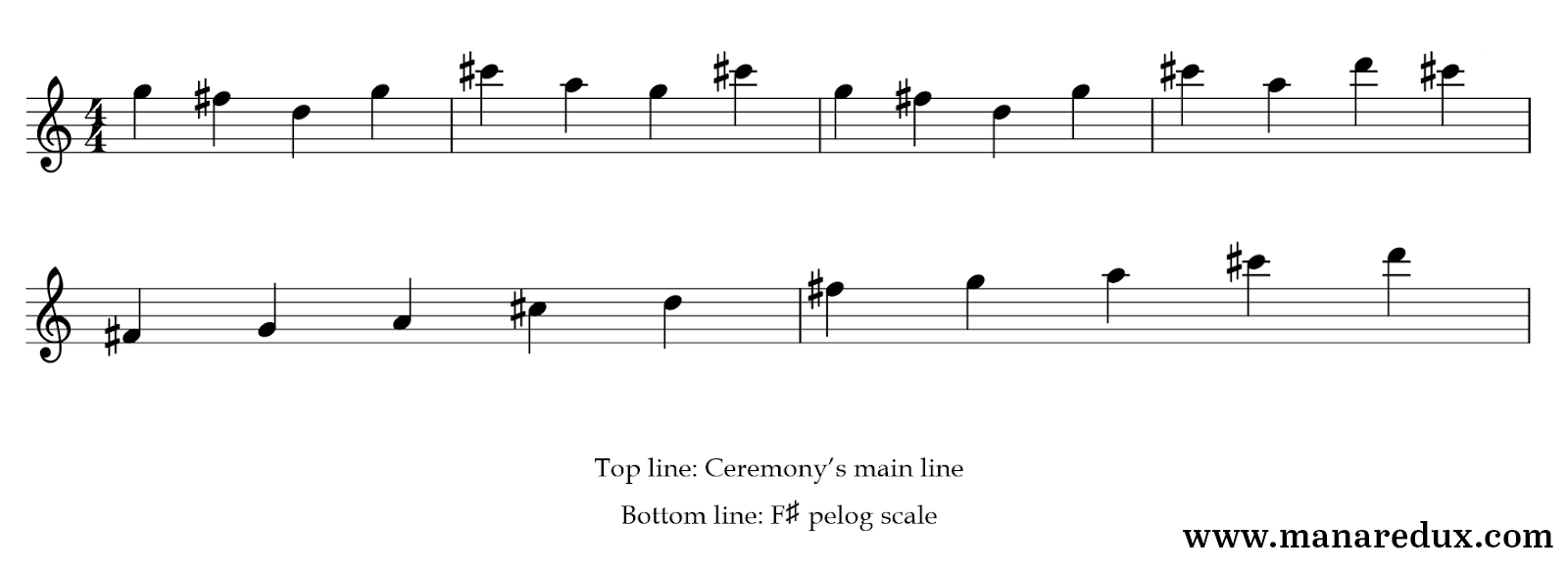Ceremony

Ceremony
February 28, 2021
In our article on Thanatos, we established his character as a literal personification of evil (like so many other antagonists). How he arrived in the Emperor’s circle is unknown. Dialogue from the Japanese version tells us that he was a recent addition to the inner circle.
Ceremony is more or less Thanatos’ theme. We hear it four times: once in each Ruins, and briefly in the Grand Palace and the Mana Fortress when we encounter him. Its title sheds light not only on the thematic focus of the music, but perhaps on Thanatos himself. If Thanatos is the embodiment of evil, what is the idea of a Ceremony that follows him? It’s not difficult to see the prospect of a religious cult surrounding Thanatos, albeit an involuntary one as the followers in Pandora and the Empire appear to be under his control. The theme of a hellish cult surrounding a malevolent entity can also be found with that of Kefka in Final Fantasy VI, or the zealotry of the elites in Chrono Trigger in regards to the power of Lavos. As Dyluck tells us, Thanatos sold himself to the underworld, so perhaps the ritual is actually an appeal to a higher (or lower) authority. The ceremony motif may also reference his dark magic. Thanatos can manipulate “life forces”, turning other people into mindless servants, or transferring his own to other people to live indefinitely.
Kikuta has spoken of his interest in minimalism, and Ceremony is a model of this. It has a gamelan arrangement, consisting of the sound of two bells struck with mallets, then a flute and a gong. The gong opens the piece, and the low bass remains as a drone for the first section. The lack of resolution and persistent intensity of this drone gives the rest of the instruments an appropriately unnerving sound. A bell plays the top line with one note per beat, while another bell plays a supporting rhythm underneath. A low flute plays a phrase mostly between the notes of the top line. The choice of notes here often results in dissonance with the high bell, giving the sound its unsettling quality. Side note—I played this track for an Indonesian friend who didn’t think of it that way—all she wanted to do is dance.
Ceremony uses the notes of the pelog scale starting on F#:
At :25, there’s a rush of sound that calls both a gong and a wailing choir to mind. This intensifies the track, but the flute and middle voice pause and only the upper line of bells is heard. After this, the piece repeats ad infinitum, even with the introductory gongs, meaning the ritual is repeated forever.
In 2018, the middle bell was changed to a purely rhythmic timbre, eschewing the melodic accompaniment of the SNES version. This track also removes the reverb of the earlier version. Ironically, it sounds more synthetic, although it does replicate the unique feel of the original.
We may not have the explicit pronouncement of a cult aspect to Thanatos, but can get an idea with Ceremony. A fun one to blast your friends with while driving at night in the middle of nowhere (I may know from experience).
Gamelan Bells – Cup Drum layered with glockenspiel in one octave from Yamaha TG55/77/99
Tubular Bell – Yamaha TG77
Flute – Wave 18 Flute on Yamaha TG55
Cymbals – Yamaha TG55/77/99
Choir – Wave 32 (Itopia) on Yamaha TG55/77/99 (pitch adjusted to sound deep)



This track terrified me as a kid. I think if you performed an orchestral version with in-tune instruments you could argue that this is quite a beautiful gamelan piece. But no! Kikuta purposely made EVERYTHING out of tune with everything else, including the individual gamelan parts themselves which appear to be layered for additional dissonance, on top of the warbly out of tune drone underneath it. Even the flute part appears to be tuned a quarter tone flat.
You combine all this with the fact that every downbeat involves a minor 2nd, a tritone, or a minir 13th, and you get a piece of music that is jarring dissonant. But that drone! The drone underneath gives you these short moments of resolution that ALMOST make it seem like actual ceremonial church music, but that only adds to the sinister effect because it’s warped and twisted and out of tune. So the effect is of something peaceful or ritualistic that’s been deeply corrupted. It’s really a brilliant piece of music and while the dissonance in the notes is not in and of itself “scary”, the way in which those notes have been altered to accentuate the dissonance really makes it unnerving. And who can forget that gong… what a freaky sound!